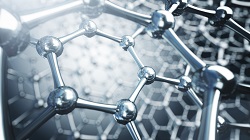Using graphene for flawless tunnelling accelerometers
Accelerometers are used in a wide range of applications, from navigation systems in aircrafts to motion sensing in cars and portable electronic devices. But the most demanding applications require high-resolution accelerometers which are both very large and extremely expensive to manufacture. For such applications, which include the likes of microgravity measurements, acoustic measurements and seismology, the use of tunnelling accelerometers might seem self-evident. A giant step ahead of their conventional counterparts, they can be produced at much lower cost whilst providing unmatched precision. Yet, their commercialisation is still hindered by a complex fabrication process and long-term instability. Enter the GraTA (Graphene Tunneling Accelerometer) project, which is developing a first-of-its-kind – and already patented – tunnelling accelerometer design using graphene. Its technical advantages, which include smaller size, wider bandwidth, simpler fabrication and natural stability, are already turning heads within industry. Among other things, it could enable the production of high-end sensors based on graphene. Prof. Dr Pertti Hakonen, who is in charge of the project, discusses his tunnelling accelerometer concept, its development process and prospects for commercialisation. What shortcomings of tunnelling accelerometers were you aiming to tackle with this project? The lack of long-term stability of silicon-based, metal-coated tunnelling sensors is the main shortcoming we tried to overcome. The sensitivity and bandwidth will be improved as well. Why do you think graphene can offer a suitable solution to achieve this objective? Graphene is known to have superior mechanical properties (light, strong, robust carbon crystal) and good electrical conductivity (no need for metal coating). We are experienced in dealing with details such as tension in graphene microelectromechanical systems (MEMS) structures. The nature of the material and our know-how make the graphene accelerometer a potential solution. What were the main difficulties you faced in making these new graphene accelerometers a reality? The manufacturability (and reproducibility) is the main challenge when switching from lab samples to future accelerometers to be called a product. What would you say have been your most important achievements so far? We have proven that the tiny gap is not prone to collapse, even in air, which is crucial for its reliability. The core patent has been filed, and one more with related materials is on the way. What do you still need to do before the end of the project? We need to build more prototypes which are properly packaged, and collect more data out of the lab. What kind of sensor applications do you have in mind? Machine vibration monitoring – the most widespread method to determine the health of rotating equipment – would be an example. This is valuable for safety and smart maintenance in modern industry, especially in the era of the Internet of things. How close would you say you are to potential commercialisation? This is hard to say. Commercialisation takes much longer and requires different means than what we had available for our research work in the lab environment. However, with the key IPR filed and more field data being collected, we are on the right track towards the goal of commercialisation.
Countries
Finland



